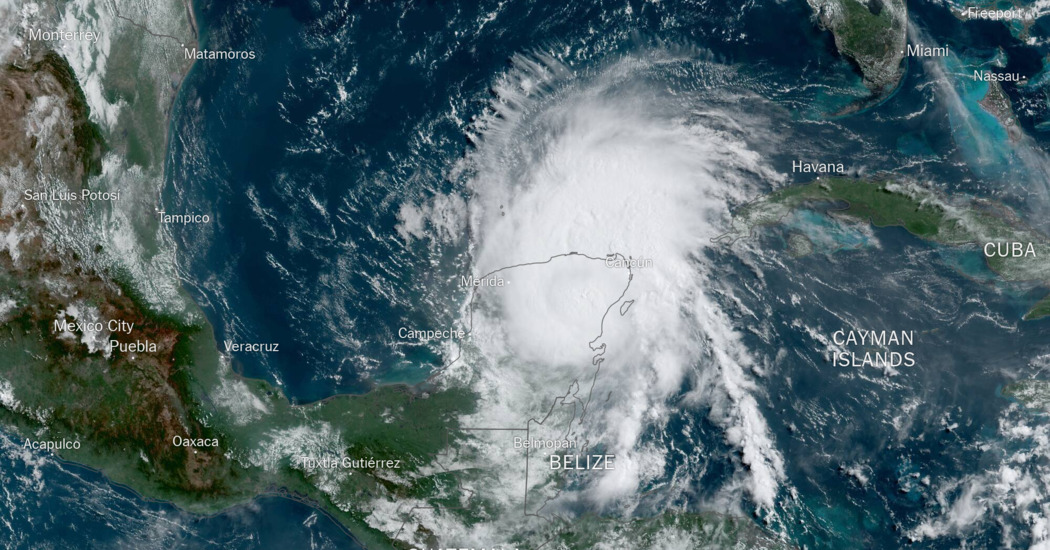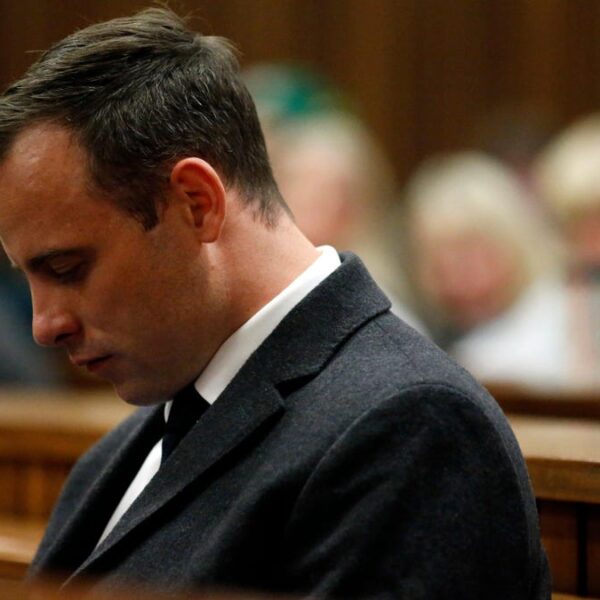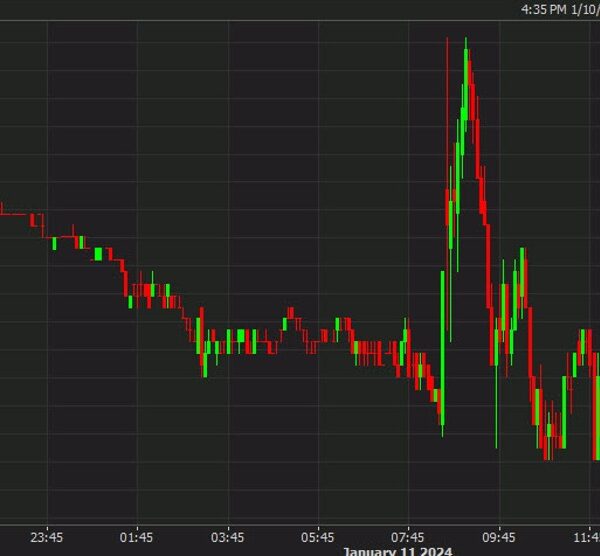Hurricane Beryl made landfall on the Yucatán Peninsula of Mexico on Friday morning as a Category 2 storm, after spending this past week tearing through the eastern Caribbean, where it left islands flattened. The storm, which weakened slightly as it moved inland, is expected to emerge in the Gulf of Mexico by the end of the day.
On Friday morning, photos posted on social media, including some shared by state officials, showed Beryl was causing some minor damage as it moved through the Yucatán. Streets blocked by utility poles and trees, collapsed store signs and a gas station canopy nearly flipped on its side were among the first reported impacts of the storm.
The storm has left destruction in its wake.
Forecasters were predicting that Mexico would be hit twice by the hurricane. It was on track to cross the Yucatán Peninsula on Friday, and then, after traversing the Gulf of Mexico, reach the coast of the northern state of Tamaulipas.
In a news conference, Laura Velázquez Alzúa, Mexico’s coordinator of civil protection said that no injuries or deaths had been reported so far. More than 2,100 people were taking refuge in shelters, and four residents had been rescued after their home was flooded.
The authorities were already on the streets assessing damage, she added, particularly in the municipality of Tulum, and although power outages were reported across the state, electricians were working to restore electricity.
“We saw a truce of nature, which is always capricious in the Maya zone,” Mara Lezama, the governor of the state of Quintana Roo, said on Friday morning, adding that there were not as many downed structures compared to the aftermath of previous storms. “The wind was benevolent.”
The airports of Tulum, Cozumel and Cancún were spared by the storm, Ms. Velázquez Alzúa said.
Before the hurricane made landfall, President Andrés Manuel López Obrador of Mexico called for residents to move to higher ground, evacuate to shelters or get to safer places. “Let’s not hesitate, material things can be recovered,” he said on social media. “The most important thing is life.”
Early Friday, Mexico’s meteorological agency said the storm had dumped between six and 10 inches of rain in Campeche, Quintana Roo and Yucatán. It reported wind gusts as high 135 m.p.h. and a storm surge of more than 10 feet along the coasts of Quintana Roo and Yucatán.
Earlier this week, at least nine people were killed as the storm lashed parts of Grenada, then Jamaica and the Cayman Islands. The office of the Jamaican prime minister released a statement on Friday saying that the storm had “brought significant hardship to our nation.”
Beryl made landfall on Monday in Grenada, where officials said about 98 percent of the buildings on Carriacou and Petite Martinique, home to 9,000 to 10,000 people in total, had been damaged or destroyed, including Carriacou’s main health facility. Crops were ravaged, and fallen trees and utility poles littered the streets.
“We have to rebuild from the ground up,” said Dickon Mitchell, the prime minister of Grenada.
It then churned along toward Jamaica, where on Wednesday, heavy rain and destructive winds left their mark. Beryl was the strongest storm to approach the island in over a decade.
The storm ripped away a section of the jet bridge roof of Jamaica’s main airport. Jamaica’s transport minister, Daryl Vaz, said a plan was being prepared to figure out how the airport would operate while the roof for boarding and arrivals was being repaired.
Residents in the Cayman Islands were largely breathing a sigh of relief after Hurricane Beryl passed by at Category 3 strength on Thursday morning without making landfall. There were no reports of significant damage, injuries or fatalities. Officials said, however, that they were still assessing the storm’s full effects.
This hurricane season is expected to be busy.
Forecasters have warned that the 2024 Atlantic hurricane season could be much more active than usual.
In late May, the National Oceanic and Atmospheric Administration predicted 17 to 25 named storms this year, an “above-normal” number and a prediction in line with more than a dozen forecasts earlier in the year from experts at universities, private companies and government agencies. Hurricane seasons produce 14 named storms, on average.
Johnny Diaz, John Yoon, John Keefe, Mike Ives, Kenton X. Chance, Jovan Johnson, Emiliano Rodríguez Mega, Aimee Ortiz, Derrick Bryson Taylor, Julius Gittens, Remy Tumin, Jesus Jiménez, Orlando Mayorquín, Sharefil Gaillard, Derek M. Norman, Christine Hauser, Linda Straker, Yan Zhuang and Claire Moses contributed reporting.















